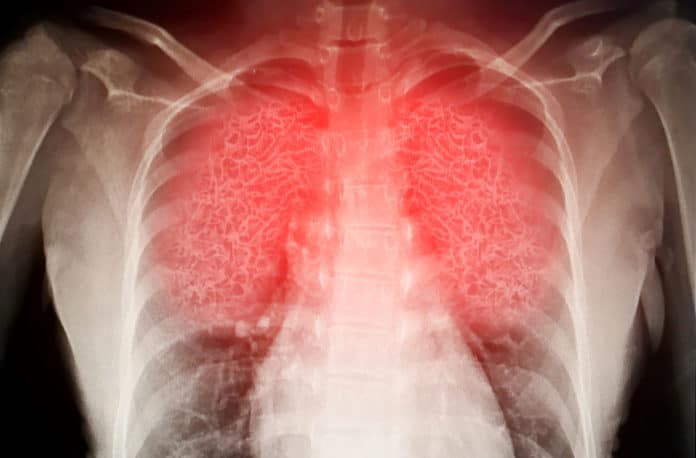Acute lung inflammation (ALI) is a part of acute respiratory distress syndrome (ARDS). It is the dominant cause of death in COVID-19.
When ALI or ARDS occurs, the lung’s air sacs take on neutrophils- the white blood cells responsible for detecting and eliminating harmful particles in the body- to the lungs to eliminate circulating microbes. Neutrophils release compounds that further aggravate lung injury and damage the air sacs during this process. As a result, patients develop low blood oxygen levels.
Unfortunately, there is no effective treatment to control the severity of ALI/ARDS. To address ARDS and other medical problems, scientists at Penn and elsewhere use nanoparticles to concentrate drugs in injured or diseased organs. Such nanoparticles are also being used for gene therapy and immunotherapy.
Scientists suggest that studying how neutrophils differentiate what materials to uptake by the material’s surface structure and favor uptake of particles that exhibit “protein clumping’ could offer a promising diagnosis and treatment of ARDS.
In their study, scientists determined how neutrophils differentiate between bacteria to be destroyed and other compounds in the bloodstream, such as cholesterol particles. They tested a library containing 23 different protein-based nanoparticles in mice with ALI. They found a set of rules that predicted uptake by neutrophils.
Neutrophils don’t take up symmetrical, rigid particles, such as viruses, but they do take up particles that exhibit ‘protein clumping.’ Scientists call those particles nanoparticles with agglutinated protein (NAPs).
Study lead author Jacob Myerson, Ph.D., a postdoctoral research fellow in the Department of Systems Pharmacology and Translational Therapeutics, said, “We want to utilize the existing function of neutrophils that identifies and eliminates invaders to inform how to design a ‘Trojan horse’ nanoparticle that overactive neutrophils will intake and deliver treatment to alleviate ALI and ARDS. To build this ‘Trojan horse’ delivery system, though, we had to determine how neutrophils identify which particles in the blood to take up.”
Scientists noted, “While the development of viable therapies for ALI/ARDS using nanoparticles to deliver treatments via neutrophils is a long way off, this research represents a significant step in understanding the condition and function of the immune system.”
Senior author Jacob Brenner, MD, Ph.D., an associate professor of Pulmonary Medicine in the Division of Pulmonary, Allergy, and Critical Care, said, “Now that we have determined that neutrophils patrol for nanoparticles with agglutinated protein, our next step is to understand how and why other microbes, like viruses, which are rigid and symmetrical, evolved to evade neutrophils.”
“With this knowledge, we can continue to utilize this unique combination of material science and engineering to create disease-specific therapies that target more advanced and complicated pathologies.”
Journal Reference:
- Jacob W. Myerson, Priyal N. Patel et al. Supramolecular arrangement of protein in nanoparticle structures predicts nanoparticle tropism for neutrophils in acute lung inflammation. Nature Nanotechnology, 2021; DOI: 10.1038/s41565-021-00997-y
